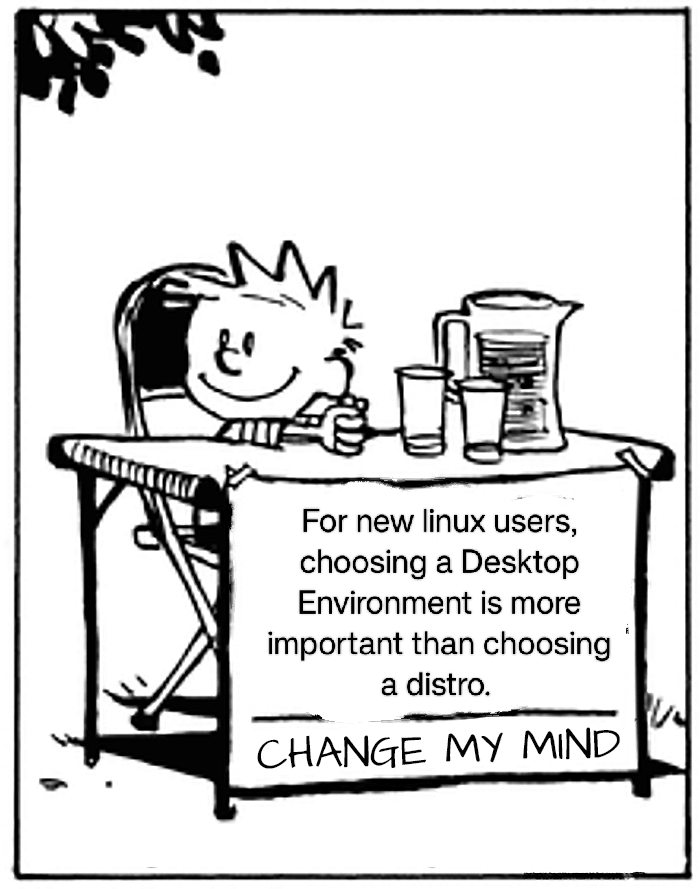this post was submitted on 21 Jan 2024
1729 points (97.8% liked)
linuxmemes
20473 readers
1000 users here now
I use Arch btw
Sister communities:
- LemmyMemes: Memes
- LemmyShitpost: Anything and everything goes.
- RISA: Star Trek memes and shitposts
Community rules
- Follow the site-wide rules and code of conduct
- Be civil
- Post Linux-related content
- No recent reposts
Please report posts and comments that break these rules!
founded 1 year ago
MODERATORS
you are viewing a single comment's thread
view the rest of the comments
view the rest of the comments

Ext4 is the safe bet for a beginner. The real question is with or without LVM. Generally I would say with but that abstraction layer between the filesystem and disk can really be confusing if you've never dealt with it before. A total beginner should probably go ext4 without LVM and then play around in a VM with the various options to become informed enough to do something less vanilla.
This part is skippable, right? Any reason a user should ever care about this?
(note: never heard of LVM before this thread)
It makes adding space easier down the road, either by linking disks or if you clone your root drive to a larger drive, which tends to not be something most "end users" (I try not to use that description but you said it heh) would do. Yes, using LVM is optional.
It's all skippable if you want... Just put a large / filesystem on a partition and be on your way. There are good reasons for using it in some cases (see my response now).
This would absolutely be my thinking too. When I was still newish to linux, I remember lots of confusion with LVM and trying to reformat drives.
What is LVM?
Can you explain LVM in practice to me? I used ext4 and now Fedora Kinoite with BTRFS, the filsystem never makes any problems and some fancy features just work.
In practice, you would split a disk up to keep /home separate from/ and probably other parts of the filesystem too like /var/log.. this has long been an accepted practice to keep a full disk from bringing something production offline completely and/or complicating the recovery process. Now, you could use partitions but once those are set, it's hard to rearrange them without dumping all the data and restoring it under the new tables. LVM stands for Logical Volume Manager and puts an abstraction layer between the filesystems and the partitions (or whole disk if you are into that). This means you can add Disks arbitrarily in the future and add parts of those disks to the filesystems as required. This can really minimize or even eliminate downtime when you have a filesystem getting filled up and there's nothing you can easily remove (like a database).
It's good to know but with the proliferation of cloud and virtual disks it's just easier on those systems to leave off LVM and just keep the filesystems on their own virtual disks and grow the disk as required. It is invaluable when running important production systems on bare metal servers even today.
Hope this helps.
Thanks! So BTRFS does something similar with volumes, but baked in.
I should also point out that some modern filesystems like btrfs and zfs have these capabilities built into the filesystems natively so adding LVM into the mix there wouldn't add anything and could, in fact, cause headaches.